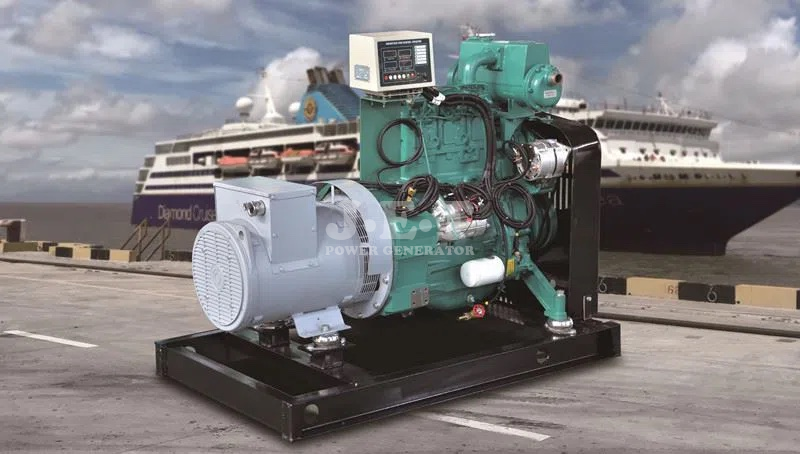Precautions For Marine Diesel Generator Maintenance
- 02 - 04 - 2020
- 545
During the maintenance of marine diesel generators, attention should be paid to the working environment: there should be no accumulation of water, oil and dirt in the vicinity, and there must be no corrosive gas to prevent injury to the generator winding insulation. Inventory the tools, rags, etc. used in the work after completion to prevent them from being left inside the generator. Marine generators are mostly cooled by internal ventilation, and air filters are installed at the inlet of the cooling air. The temperature of the cooling air must not be too low to avoid condensation on the windings and other conductive devices. If the generator is exfoliated or rusted, it should be removed in time and coated with anti-rust paint; when the insulation paint is slightly damaged, it should be repaired with spray paint in time, but it must be cleaned first.

1) Carefully inspect the interior of the marine diesel generator, and there must be no foreign matter to prevent it from falling into screws, tools, rags and other foreign objects;
2) Use dry compressed air or leather tigers of about two atmospheres to remove dust from all parts of the generator. To avoid damaging the coil, metal blowpipes must not be used;
3) Check the lubrication of marine diesel generator bearings (multipurpose sliding bearings for large generators). The quality and quantity of lubricating oil and grease must meet maintenance requirements;
4) Check whether the connection between the generator and its prime mover is good, and the axes of the two should be on the same straight line;
5) Check whether the rotor is flexible and check the bearing quality at the same time;
6) Clean the slip ring;
7) Check the brush device, including the length of the brush, whether it is flexible in the brush grip, whether it is jammed, and whether it is ablated. The brush pressure should be 14.7 ~ 19.6KPa;
8) Measuring the insulation resistance of the stator and rotor lines: measured with a 500V megohmmeter, generally not lower than 2MQ (classified by the classification society must not be lower than 0.5MQ).
9) If the generator structure permits, use a feeler gauge to measure the air gap. The ratio of the difference between the maximum and minimum air gaps to the average air gap must not exceed ± 5%, and the low speed generator should not exceed ± 10%;
10) Check whether the excitation wiring is correct and whether the leads are firm;
11) Check all fasteners, and tighten them if they are loose;
12) Test run should be carried out before the official operation to make the generator idling. After reaching the rated speed, stop the machine and check whether the steering, rotation and bearing temperature meet the requirements.
